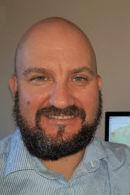Earth Sciences Seminar: Dr Fabian Kohlmann
- Date: Fri, 24 May 2019, 3:00 pm - 4:00 pm
- Location: Mawson Lecture Theatre
- Cost: FREE
- Contact: Dr Morgan Blades 8313 3174
- Email: morgan.blades@adelaide.edu.au

Presenter
Dr Fabian Kohlmann
CEO & Head of Geo Data Sciences
Lithodat Pty Ltd
After 3 years of Equinor (former Statoil) sponsored post-doctoral work in thermochronology and landscape evolution modelling at Bergen University, Norway, Fabian joined Neftex Petroleum Consultants in 2013 and was put in charge of developing Paleo-Digital Elevation Models and a global thermochronology dataset and their subsequent integration into Plate Modeling, 1D Basin Modelling and Gross Depositional Environment mapping. 2014 Neftex became part of Halliburton, for which Fabian has led since the thermochronology team and was part of Halliburton’s new global Source-to-Sink development.
Fabian left Halliburton in 2018 to start his own cloud-hosted geoscience data company back in Melbourne. Beside his current job as the CEO & Head of Geo Data Sciences of Lithodat he also holds a director position with Pangeo Exploration Ltd, UK.
He holds a PhD degree in Earth Sciences from the University of Melbourne and a MSc degree in Geology and Paleontology from the Ludwig-Maximillians University in Munich, Germany.
Building a cloud-hosted global thermochronology and thermal histories database and its application in hydrocarbon exploration workflows
The academic community has tried for many years to establish a global repository for all published thermochronology data but has so far not been successful to find a common solution. In this talk we demonstrate our efforts in achieving this task and how we extract and utilize all published detailed thermochronology information in a cloud-hosted database and ways to display this data on the fly. In this database all available and published fission track and (U-Th)/He data is captured together with all thermal-history models, which are digitized and transformed into one meaningful, standardized format. This new resource intensive process yields a comprehensive source of thermochronology-derived information that is easy to use and directly applicable for exploration workflows.
In this seminar we show the data acquisition process, range of data types captured, pitfalls during data gathering and software developed to rapidly display thermochronological information. We also demonstrate the additional insights that this process provides, as compared to those available from public datasets. This database enables a unique way of viewing data within a consistent temporal, spatial, and thermal framework. The discussion also includes examples of the integration of this new dataset within exploration workflows, including its application in gross depositional environment mapping, basin modelling, and its use to improve regional plate tectonic frameworks.
The integration of thermal history, thermochronology, and geochronology datasets rapidly identifies areas that have undergone episodes of cooling or heating through time. This enhanced understanding of hinterland evolution and basin subsidence provides better constraints for more detailed source-to-sink studies. It also enables the identification of paleo-topographic highs and the distribution of major quartz-rich sediment source areas. Active sediment sources are therefore identifiable, helping to refine pre-drill reservoir predictions.
